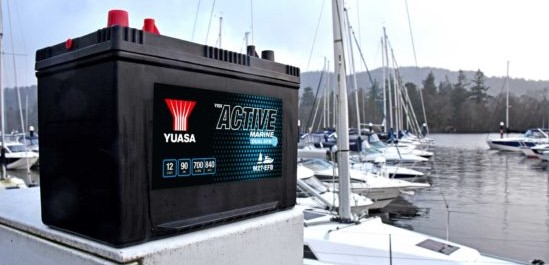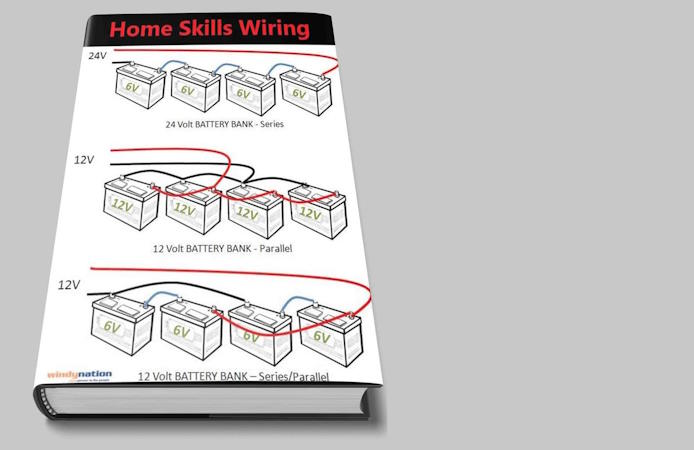| HOW TO CHOOS BATTERY FOR WATERCRAFT? |
 |
 |

Choosing a new boat battery can be a challenge, whether you’re a boating novice or a professional fisherman. So what do you choose? Do you go for the cheaper option initially or do you invest in a longer-term option? And what type of batteries do you even need?
Thankfully, things can be broken down pretty simply. To make things ultra easy, let’s first discuss the three main types of boat batteries: starter, deep cycle, and dual-purpose.
- Starting Battery: Your boat’s engine may be kicked into gear with the help of a marine battery. A cranking or starting battery serves one purpose. “Crank” refers to the speed with which a starting battery produces its total power output. Basically, the job of the starting batteries is to “crank” or start your boat. It won’t keep your engine running. The next boat battery on the list does that.
- Deep Cycle Battery: The plates in these batteries are thicker than those found in typical starting batteries. Using these plates, they can reliably provide electricity many hours a day. They have a high number of possible charging/discharging cycles too. These work well for lighting, GPS, fish finders, and powering your trolling motor.
- Dual Purpose Marine Battery: As its name implies, this battery is a starter and a deep cycle battery. Dual-purpose batteries have always had the reputation of being “jacks of all crafts and masters of none.” Some won’t provide enough juice to get specific motors going. Regular deep-cycle batteries have a much shorter lifespan than the alternatives. Lithium batteries are the exception. Our 12V battery options—the 100Ah and the 125Ah—serve double duty.
And one quick sidenote before we jump into the types of batteries – battery capacity. A 12v 125Ah battery has 125 amp hours – that’s what Ah stands for. In other words, it can (in theory at least) deliver 125 amps for an hour. That’s its capacity, the amount of current the battery provides. The “12V” is 12 volts. Multiply the volts by the amps and you’ll get the total wattage or workload of your boat battery. Ok, moving on.
Most boats require two types of batteries: a starting battery and a deep cycle battery. Getting a battery that can do double duty might be appealing from a cost or storage perspective. Nevertheless, this is only recommended if you choose a lithium chemistry battery. That takes us to a different way to break down boat batteries: by chemistry.

Battery Breakdown By Chemistry
There are two main types of marine batteries out there. When you separate them by what they’re made of, we’re talking about lead-acid and lithium.
Lead Acid Marine Batteries
Lead acid batteries are among the most traditional forms of marine batteries. Lead plates and acid are its primary ingredients. A blend of distilled water and sulfuric acid is used in flooded lead acid (FLA) batteries, the kind you often see aboard boats. Every so often, you’ll need to give them water.
Lead acid batteries are large and heavy, which are not qualities you want in a boat battery. Depending on how much power you want, you may need two or three batteries, each weighing about 80 pounds. That’s equivalent to adding one to two more people! They also have the longest charging times of any battery on the market.
AGM and gel lead-acid batteries both provide certain enhancements. They won’t leak and have a decreased rate of self-discharge. Nonetheless, their storage capacity is relatively little compared to their whole footprint.
With all those apparent drawbacks, why would anybody select lead acid? The main reason is that they’re initially lower in cost (especially FLA batteries). But when you factor in how frequently you’ll need to replace them, their low initial cost becomes prohibitive. Lead acid marine batteries typically only have two to four years of lifespan.
Lithium (LiFePO4) Marine Batteries
Lithium LiFePO4 batteries are an additional option for maritime use. Lithium iron phosphate is an entirely new chemical compound. The difficulties that beset lead acid batteries are rendered moot by this combination. Lithium batteries have the advantages of being portable, lightweight, durable, and quick to recharge. Using lithium marine batteries may reduce the weight of your boat’s batteries by as much as 70%.
A marine battery made of lithium is also more secure and won’t leak. They don’t need to be maintained, giving you more time to go boating and fishing. Boaters will like that they provide the same output, whether wholly or partially charged. Hence, at the end of the day, your trolling motor and other electronics can still function as they did initially.
TERMINOLOGY AND GUIDE
The number of volts is the amount of energy given to an electronic circuit. By a circuit we mean, for example, an electronic device. With a 12V device, 12 volts are always “given” from the battery. A battery always has a fixed voltage (e.g. 12, 24, or 36 volts) and a device always works at a certain voltage. For example, a device that works on 12 volts obviously needs a battery that also supplies 12V.
Power – Watts (W): :
Power is the voltage multiplied by the number of amps, or W = V x A. This is the amount of energy consumed by a device and therefore an indication of how powerful it is. This goes up when the number of amps also goes up.
Example 2: Suppose I have a 24V Minn Kota Terrova 80 LBS bow motor that draws 30 amps. So the power consumption is 24 x 30 = 720W.
Example 3: Suppose I have another Minn Kota Endura C2 50 LBS that I am running in gear / speed setting 2. The engine runs on 12V and draws 15A and thus has a power consumption of 180W (12 x 15). When I switch to gear / speed setting 4, the engine draws 25A and still runs on 12V. The power consumption of the trolling motor is now 300W.
Capacity – Amp hours (Ah):
Battery capacity is measured in Ah, or Amp-hours. As the name suggests this means how many amps the battery can deliver in an hour. For example, a 12V lithium battery with a capacity of 100Ah can deliver 100A to a 12-volt device for one hour. The same 100Ah battery could supply power for 4 hours (100/25=4) to a 25 ampere device. If a battery has 12V50, this means that the battery works on 12 Volt and has a capacity of 50Ah. A 24V100 battery works on 24 Volt with a capacity of 100 Ah etc. In practice for lead-acid batteries the nominal capacity (how many Amps hours the battery can deliver according to specifications) differs greatly from the effective capacity (how many Amps the battery can actually deliver during use).
Example 4: I run my Minn Kota Endura C2 50 LBS in gear / speed setting 2, drawing 15A at 12V. I have a 12 volt battery of 70 ah. My total run time is now 70 / 15 = 4.7 hours. When I switch to gear / speed setting 4 the engine draws 25A. My total runtime is now 70 / 25 = 2.8 hours.

Products
BATTERY CHARGER- MINN KOTA-220E, 2 x 10 A
MK1822203
BATTERY CHARGER- VICTRON IP65, 12V, 10 A
ATK-VIC-IP65-12/10
BATTERY CHARGER- PROSPORT 12, 2 x 12 A
M14101012
|


